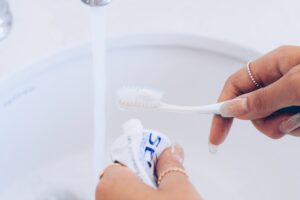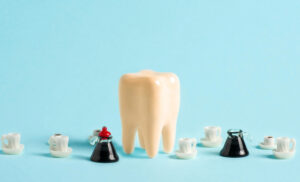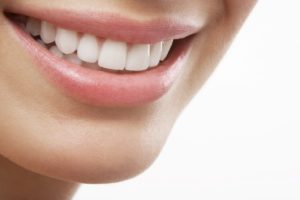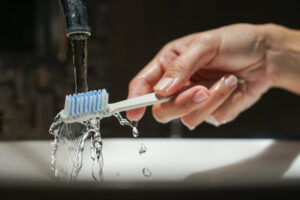Flossing is one of the most commonly recommended practices for maintaining healthy teeth and gums, but many people wonder if it’s too late to start if they haven’t flossed in years—or ever. Maybe you’ve heard about the benefits of flossing but haven’t built it into your daily routine. Or perhaps you stopped flossing at some point and are now concerned about the impact on your oral health. The good news is, it’s never too late to start flossing, and doing so can greatly improve your oral hygiene.
In this article, we’ll explore the importance of flossing, what happens if you don’t floss for a long time, and how you can start seeing benefits from flossing no matter when you begin.
When Is It Too Late to Floss?
The truth is, it’s never too late to start flossing. Even if you haven’t flossed in years—or ever—you can still begin and experience significant benefits. Flossing helps to remove food particles and plaque from between your teeth, areas that brushing alone can’t reach. This prevents plaque buildup, which can lead to gum disease, cavities, and other oral health problems.
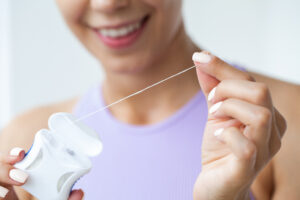
If you’ve been neglecting flossing for a long time, you may notice some bleeding or discomfort when you first start. This is normal and often a sign that your gums are inflamed due to plaque buildup. As you continue to floss regularly, the bleeding should stop, and your gums will become healthier over time.
No matter how long it’s been, adding flossing to your routine can improve your oral health and help prevent future problems.
What Happens if I Don’t Floss for Years?
If you haven’t flossed for years, you may be at a higher risk for certain oral health issues. When you don’t floss, plaque—a sticky film of bacteria—can build up between your teeth and along the gumline. Over time, this plaque hardens into tartar, which can only be removed by a dentist or dental hygienist.
Some of the potential consequences of not flossing for years include:
- Gum Disease: Plaque buildup can lead to gingivitis, the early stage of gum disease. If left untreated, gingivitis can progress to periodontitis, a more severe form of gum disease that can cause tooth loss and damage to the jawbone.
- Cavities: Plaque that’s not removed by flossing can lead to the development of cavities between the teeth. Brushing alone often can’t remove food particles stuck in these areas.
- Bad Breath: Not flossing can cause food to get stuck between your teeth, leading to bad breath, or halitosis, over time. Bacteria in your mouth feed on leftover food particles, and this can create an unpleasant odor.
While these issues may sound concerning, starting to floss—even after years of not doing so—can still help prevent further damage and improve your oral health.
How Long Does It Take for Flossing to Make a Difference?
You may be wondering how long it will take before you see the benefits of flossing, especially if you’re starting after a long break. Flossing makes a difference almost immediately, but the results will depend on the state of your oral health when you begin.
- Immediate Effects: When you floss for the first time, you’ll start removing plaque and food particles from between your teeth right away. You may notice fresher breath and a cleaner feeling in your mouth after just one session.
- Within a Few Days: If you have gum inflammation, you may notice that your gums start to look less red and swollen after a few days of regular flossing. The bleeding that often happens when you first start flossing should also begin to subside as your gums become healthier.
- Long-Term Benefits: With consistent flossing over weeks and months, you’ll reduce your risk of developing cavities between your teeth and prevent gum disease from progressing. Your overall oral health will improve, and you’ll likely notice fewer issues during dental checkups.
Even though you may not see drastic changes overnight, sticking with a regular flossing routine will lead to better oral health over time.
How Long Is Too Long Without Flossing?
While it’s never too late to start flossing, waiting too long can result in more severe oral health issues. Plaque starts to build up quickly, and within just a few days of not flossing, you might notice the effects, like bad breath or a sticky feeling on your teeth. If you go without flossing for months or years, the consequences can be more serious.
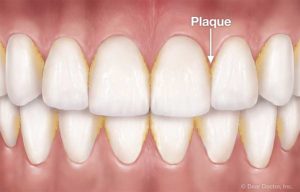
- After a Few Weeks: Plaque begins to harden into tartar, which can only be removed by a professional cleaning. You may notice more gum irritation, redness, or bleeding when brushing or eating.
- After Several Months or Years: Over time, if plaque and tartar remain between your teeth, the risk of developing gum disease and cavities increases significantly. You may notice that your gums are receding, which is a sign of more advanced gum disease.
If you’ve gone a long time without flossing, it’s important to start again as soon as possible and consider scheduling a visit to your dentist for a professional cleaning.
Can Flossing Reverse Gum Disease?
Flossing can play a key role in reversing the early stages of gum disease. If you have gingivitis, the mildest form of gum disease, regular brushing, and flossing can help to remove plaque, reduce inflammation, and reverse the condition before it progresses. However, if gum disease has advanced to periodontitis, flossing alone may not be enough to reverse the damage.
In more severe cases, professional treatment from a dentist is necessary. This may include deep cleaning treatments, medications, or, in extreme cases, surgery to address bone and tissue loss. While flossing won’t reverse severe gum disease on its own, it’s an essential part of preventing the disease from progressing further.
If you suspect you have gum disease, it’s important to see your dentist for a thorough evaluation and to start flossing daily to maintain the health of your gums.
What’s the Best Way to Start Flossing Again?
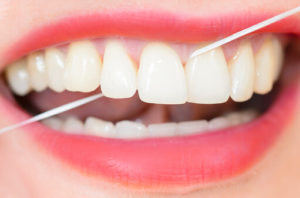
If you’ve decided it’s time to get back into the habit of flossing, congratulations! Here are a few tips to help you get started and stick with it:
1. Choose the Right Floss:
There are many types of dental floss available, including waxed, unwaxed, flavored, and unflavored varieties. If you have trouble flossing, consider using dental picks, floss holders, or water flossers to make the process easier.
2. Floss Daily:
It’s important to make flossing a daily habit. Choose a time that works best for you—either before or after brushing your teeth—and try to stick with it each day. It only takes a couple of minutes, but the benefits are huge.
3. Floss Properly:
When flossing, use a clean section of floss for each tooth, and gently slide it between your teeth, curving it around each tooth and going below the gumline. Be gentle to avoid irritating your gums.
4. Be Consistent:
Flossing is most effective when done regularly. Set a goal to floss at least once a day and stick with it. Over time, it will become a natural part of your oral hygiene routine.
5. Don’t Get Discouraged:
If your gums bleed or feel sore when you first start flossing, don’t give up. This is a sign that your gums need attention, and with consistent flossing, they’ll become healthier and the discomfort will go away.
The Benefits of Flossing
The benefits of flossing are numerous and go beyond just cleaner teeth. Some of the most important advantages include:
- Prevents Gum Disease: Flossing helps to remove plaque buildup that can lead to gum disease.
- Prevents Cavities: By removing food particles and plaque from between teeth, flossing helps to prevent cavities.
- Fresher Breath: Flossing helps to remove trapped food and bacteria, reducing bad breath.
- Healthier Gums: Regular flossing strengthens your gums and helps to prevent inflammation and bleeding.
- Improved Overall Health: Gum disease has been linked to other health conditions, such as heart disease and diabetes. By flossing regularly, you help protect not only your oral health but your overall well-being.
Conclusion: It’s Never Too Late to Start Flossing
If you’re wondering whether it’s too late to start flossing, rest assured that it’s not. Even if you’ve gone years without flossing, you can still benefit from starting now. Flossing helps to remove plaque, prevent gum disease, and keep your mouth feeling clean and fresh.
By making flossing a part of your daily routine, you can protect your teeth and gums from future problems and improve your overall oral health. So grab that floss and get started today—it’s never too late!



